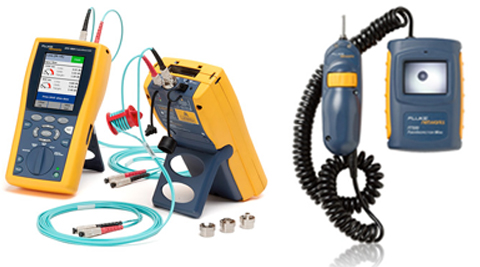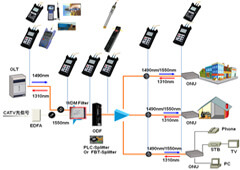How to improve production quality using fiber measurement
How to improve production quality using fiber measurement
Blog Article
Discovering Advanced Techniques in Fiber Measurement and Their Market Impact
In today's fabric market, precise fiber measurement is necessary for optimizing manufacturing procedures and conference sustainability goals. With the increase of ingenious imaging and analytical devices, you can obtain much deeper understandings into fiber framework and make-up. This shift not only boosts effectiveness however additionally straightens with market standards. As these sophisticated strategies progress, you may wonder how they can further transform making techniques and influence the future of textiles.
The Relevance of Accurate Fiber Measurement in Fabric Production

Ingenious Imaging Technologies for Fiber Analysis
When it concerns fiber analysis, ingenious imaging innovations are video game changers. High-resolution microscopy techniques and spectroscopic evaluation approaches offer you with thorough understandings right into fiber framework and structure. These developments not only enhance accuracy however additionally enhance your measurement procedures.
High-Resolution Microscopy Techniques
High-resolution microscopy strategies have changed fiber analysis, permitting researchers to visualize fibers at extraordinary levels of detail. With methods like scanning electron microscopy (SEM) and transmission electron microscopy (TEM), you can observe fiber morphology, surface attributes, and cross-sections with remarkable clearness. These techniques enable you to compare various fiber kinds and analyze their architectural stability. You'll locate that high-resolution imaging assists determine problems, incorporations, and various other critical qualities that can affect material performance. Moreover, developments in electronic imaging software have enhanced photo handling, making it easier to examine and interpret information. By embracing these innovative strategies, you can drive higher accuracy in fiber measurement and add to advancements in numerous industries, from textiles to composites.
Spectroscopic Analysis Methods
Spectroscopic evaluation techniques have become powerful devices for fiber characterization, providing understandings that match high-resolution microscopy. You can utilize strategies like infrared (IR) spectroscopy, which helps recognize the chemical structure of fibers by determining molecular resonances. Raman spectroscopy provides one more layer of information, permitting you to analyze molecular frameworks with scattering of single light. These approaches not only improve your understanding of fiber residential properties yet also make it possible for the detection of contaminations and structural variations. By incorporating spectroscopic strategies with standard microscopy, you get a more substantial sight of fibers' physical and chemical characteristics, boosting your research study precision. Eventually, these technologies can significantly affect material choice and high quality control in numerous markets.
Advanced Analytical Tools and Their Applications
As you explore the domain name of fiber measurement, you'll discover that sophisticated analytical tools play a necessary role in improving precision and performance. Methods like high-performance fluid chromatography (HPLC) and gas chromatography (GC) allow you to analyze fiber make-up with remarkable accuracy. These tools enable you to determine specific elements and pollutants, guaranteeing high quality control in your products.Additionally, making use of scanning electron microscopy (SEM) offers you a thorough view of fiber framework, aiding you comprehend just how different therapies impact performance. Modern software program likewise simplifies data analysis, making it simpler to interpret intricate results and collaborate across groups.

Effect of Fiber Measurement on Manufacturing Performance
While precise fiber linked here dimension may appear like a tiny detail, it substantially affects production effectiveness in the fabric market. When you buy precise fiber measurement techniques, you can enhance resources use and lessen waste. This causes better source allocation, permitting you to produce top notch materials without excessive using resources.By understanding fiber features, you can tailor manufacturing processes to details materials, enhancing your operations and decreasing downtime. As an example, understanding the exact tensile strength of fibers allows you change machinery settings for optimum efficiency. This not just speeds up manufacturing but likewise guarantees regular product quality.Moreover, exact fiber measurement assists you recognize issues early in the manufacturing line, protecting against expensive reworks and delays (fiber measurement). Overall, applying advanced fiber dimension methods enhances procedures, enhances performance, and inevitably enhances earnings. In today's affordable market, every detail counts, and accurate fiber dimension is a game-changer
Sustainability Factors To Consider in Fiber Assessment Techniques
When you assess fiber, it's important to ponder sustainable methods that can lessen ecological effect. Utilizing eco-friendly dimension techniques and minimizing waste in your evaluations can substantially boost your general sustainability. Additionally, integrating lifecycle analysis right into your strategies can supply a clearer photo of your fiber's ecological footprint.
Eco-Friendly Measurement Methods
Thinking about the expanding demand for sustainability in numerous industries, taking on green measurement techniques for fiber evaluation article has become crucial. You can start by making use of safe solvents and naturally degradable products in your testing processes. These choices not only reduce environmental effect but additionally enhance safety for your team. Applying electronic measurement methods can additionally minimize waste, as they commonly call for less physical examples and sources. Furthermore, leveraging innovative modern technologies like near-infrared spectroscopy can yield accurate results without hazardous chemicals. By picking these greener methods, you add to a more sustainable future while keeping high standards in fiber high quality. Inevitably, incorporating green methods into your fiber analysis not only aligns with customer worths but also enhances your brand name's credibility.
Reducing Waste in Assessment
To successfully reduce waste in fiber assessment, you can carry out approaches that streamline your screening procedures and reduce source intake. Begin by optimizing sample sizes; utilizing smaller sized samples can generate precise outcomes while saving products. Next, buy multifunctional devices that enables various tests without requiring numerous gadgets, minimizing energy and resource use. You ought to additionally think about embracing digital devices for information collection and analysis, which can minimize paper waste and improve performance. Frequently training your team on lasting practices guarantees everyone's on board with waste reduction objectives. Teaming up with suppliers who focus on sustainability can further enhance your efforts, enabling you to evaluate fibers while maintaining a dedication to environmental obligation.
Lifecycle Analysis Integration
Integrating lifecycle evaluation (LCA) right into fiber evaluation techniques can considerably enhance sustainability initiatives. By examining the environmental influences of fibers from manufacturing to disposal, you can identify areas for improvement. This method assists you recognize resource intake, power usage, and waste generation throughout the fiber's life.When you integrate LCA, you're not simply determining fiber features; you're also considering the environmental footprint. This all natural sight enables you to make informed decisions that prioritize sustainability. You could select fibers that require less resources or have a reduced carbon impact. Inevitably, LCA empowers you to enhance processes, reduce waste, and advertise eco-friendly selections in fiber production, straightening your exercise with global about his sustainability goals.
Industry Standards and Laws Shaping Fiber Measurement
As the need for high-quality fiber products grows, understanding the industry standards and policies that regulate fiber dimension ends up being crucial. These standards ensure uniformity, accuracy, and security in the measurement process, which eventually affects item top quality. Organizations like ASTM International and ISO established forth criteria that suppliers have to follow, covering numerous facets such as fiber identification, toughness screening, and dampness material analysis.

Future Fads in Fiber Measurement and Textile Production
Exactly how will advancements in technology improve fiber measurement and fabric manufacturing? You'll see a change toward automation and real-time information analysis, enhancing precision and efficiency. Smart sensing units will certainly keep an eye on fiber residential or commercial properties continually, permitting for immediate changes in production. This indicates you can expect better fabrics with less waste.Moreover, AI and maker learning will forecast trends in consumer choices, enabling producers to adjust quickly. optical measurement system. By incorporating blockchain technology, you'll have much better traceability of products, making certain sustainability and moral sourcing.Virtual truth and increased fact will certainly contribute too, supplying immersive training experiences for workers on fiber handling and production processes.As you accept these adjustments, the textile market will certainly change right into a more responsive, sustainable, and innovative sector, setting brand-new standards for quality and performance. The future of fiber measurement and fabric production is intense, and it's time to jump on board
Frequently Asked Questions
What Are one of the most Typical Fiber Types Measured in the Market?
In the market, you'll often experience natural fibers like cotton and wool, as well as synthetic choices such as polyester and nylon. Each type has distinct buildings, influencing their dimension and application in different products.
Exactly How Do Fiber Measurements Impact Consumer Product Top Quality?
Fiber dimensions straight influence consumer product quality by ensuring uniformity, longevity, and efficiency. When you comprehend these metrics, you can make educated choices, leading to enhanced satisfaction and far better total experiences with the products you utilize.
What Training Is Required for Fiber Measurement Technicians?
To come to be a fiber dimension technician, you'll require specific training in textile science, dimension methods, and equipment procedure. Hands-on experience and qualifications can improve your skills, making you skillful in exact fiber analysis and quality control.
Are There Any Kind Of Accreditations for Fiber Measurement Professionals?
Yes, there are qualifications for fiber measurement specialists. You can go after options like the Qualified Fiber Optics Professional (CFOT) or different industry-specific qualifications that improve your competence and reliability in fiber dimension and testing.
Exactly How Can Small Organizations Implement Fiber Dimension Techniques Effectively?
You can carry out fiber measurement methods properly by purchasing cost effective tools, educating your team, and establishing clear methods. Collaborate with market specialists and continuously improve your procedures to improve precision and performance in time.
Report this page